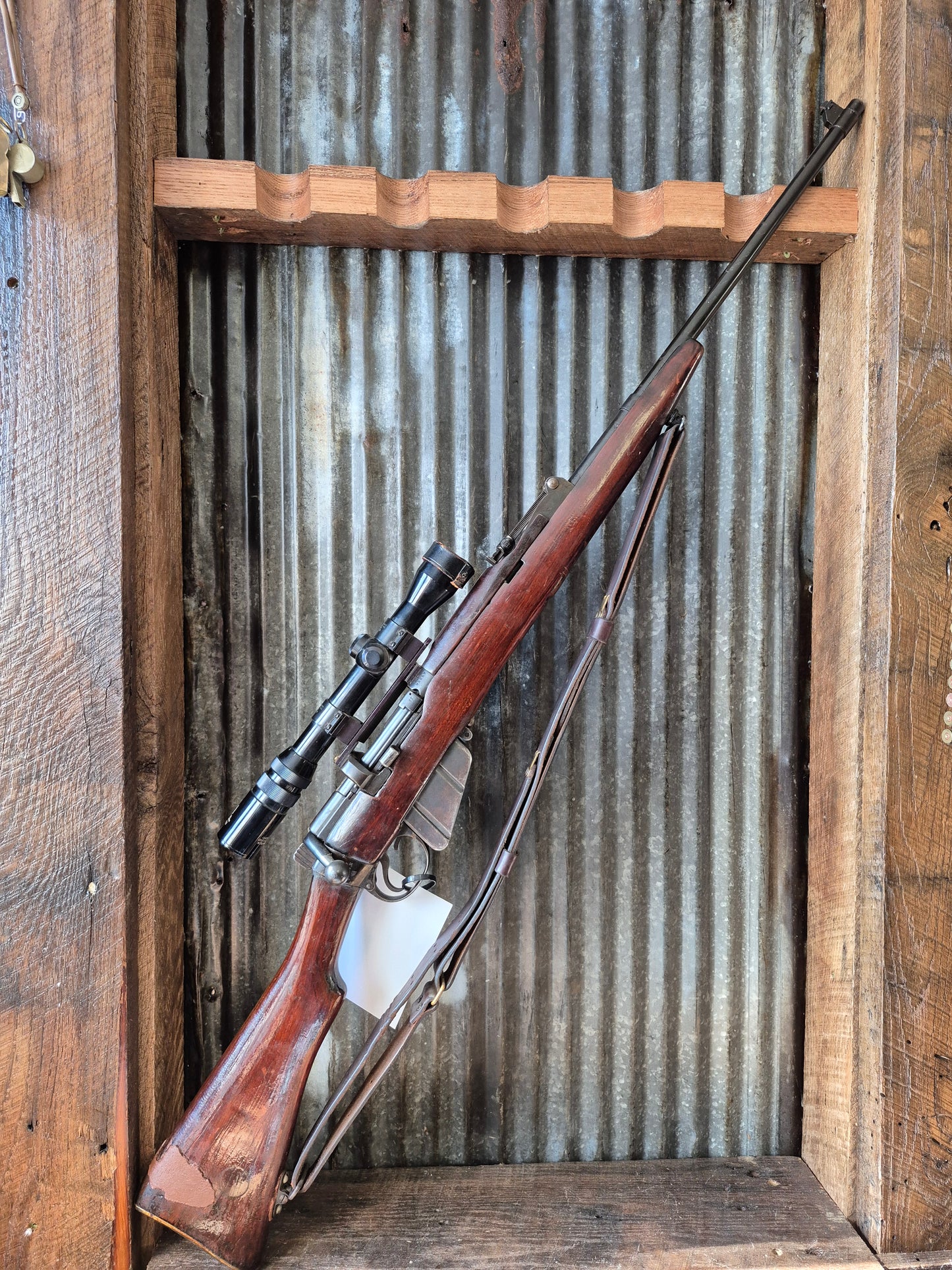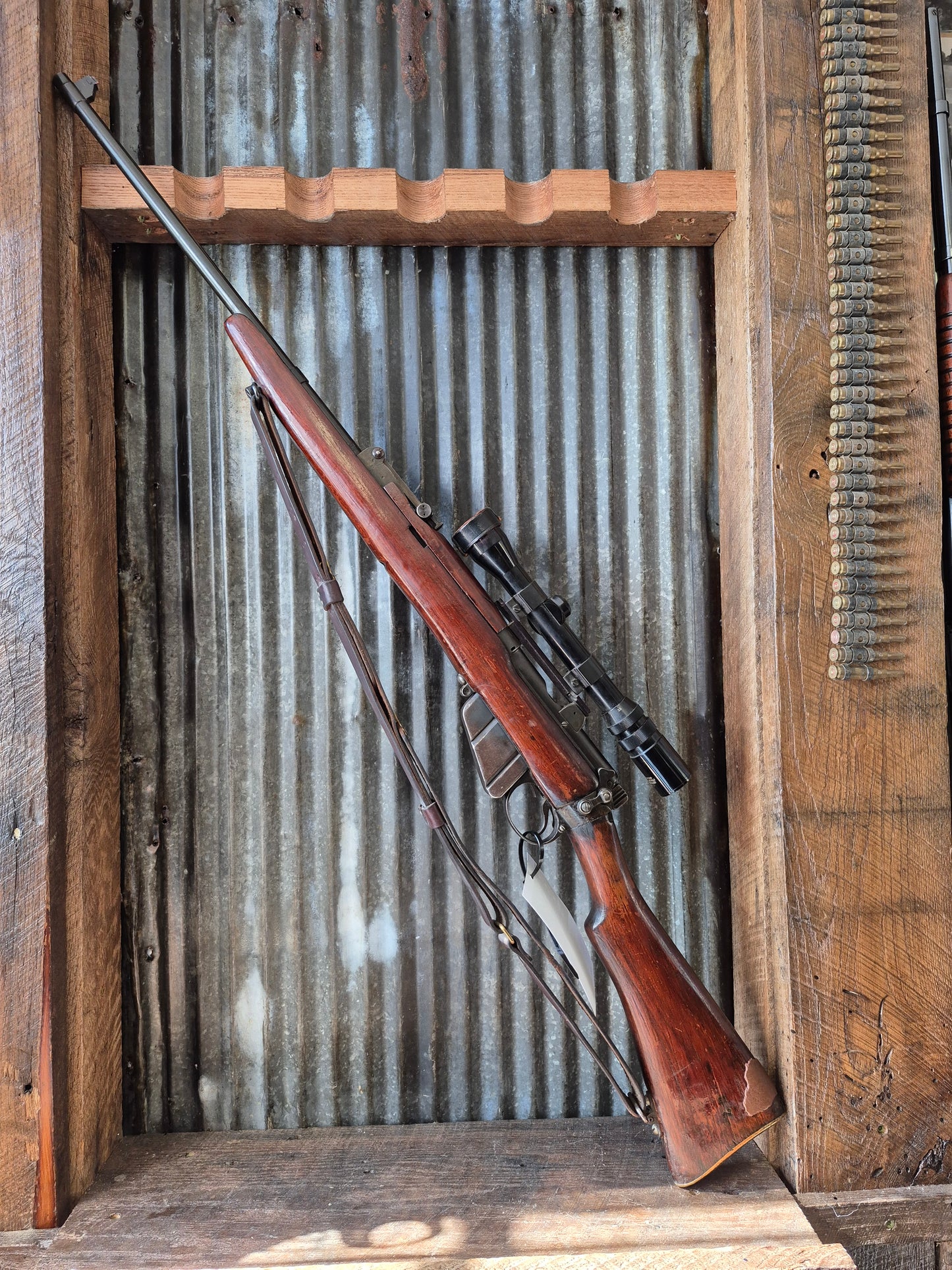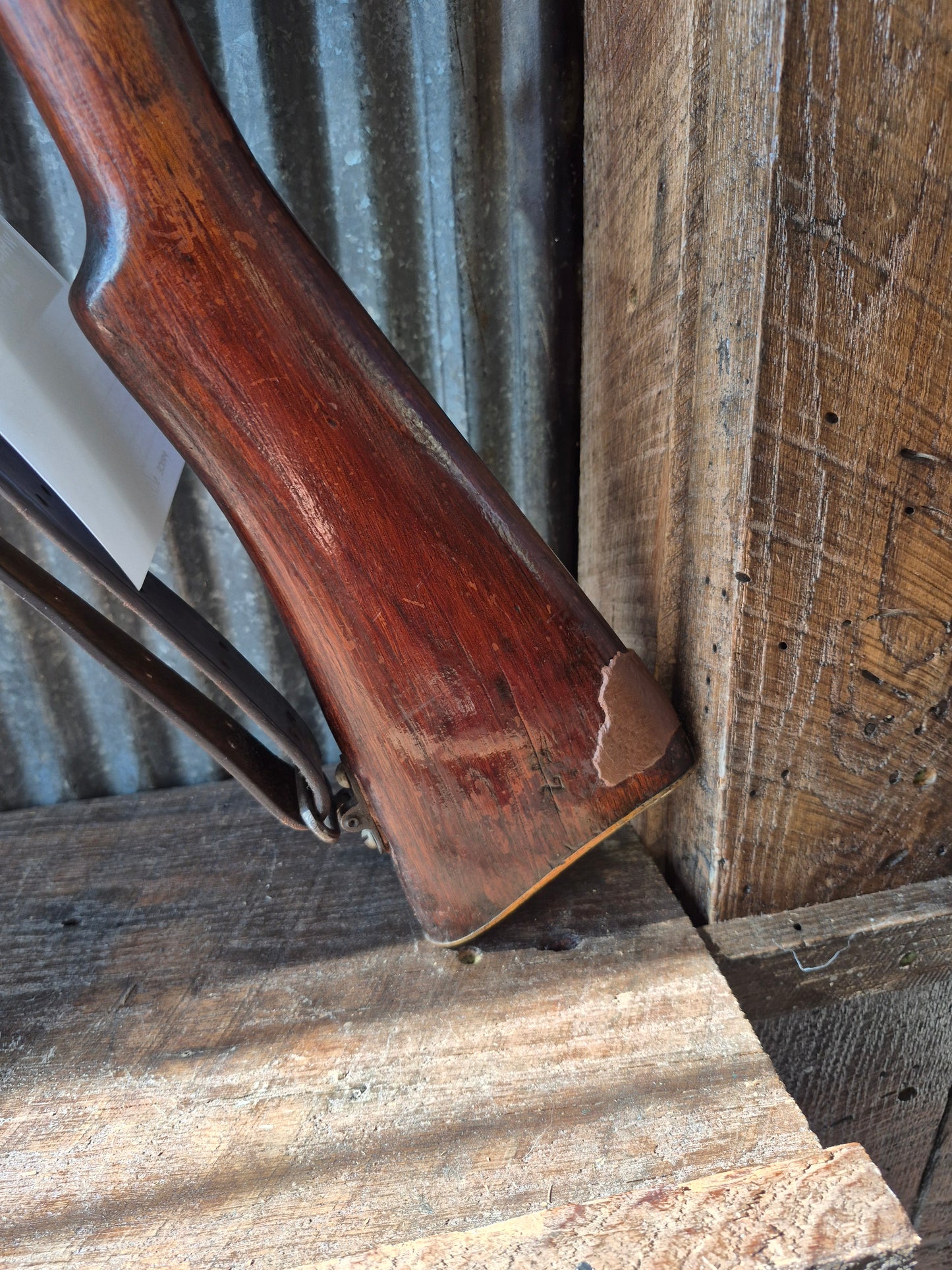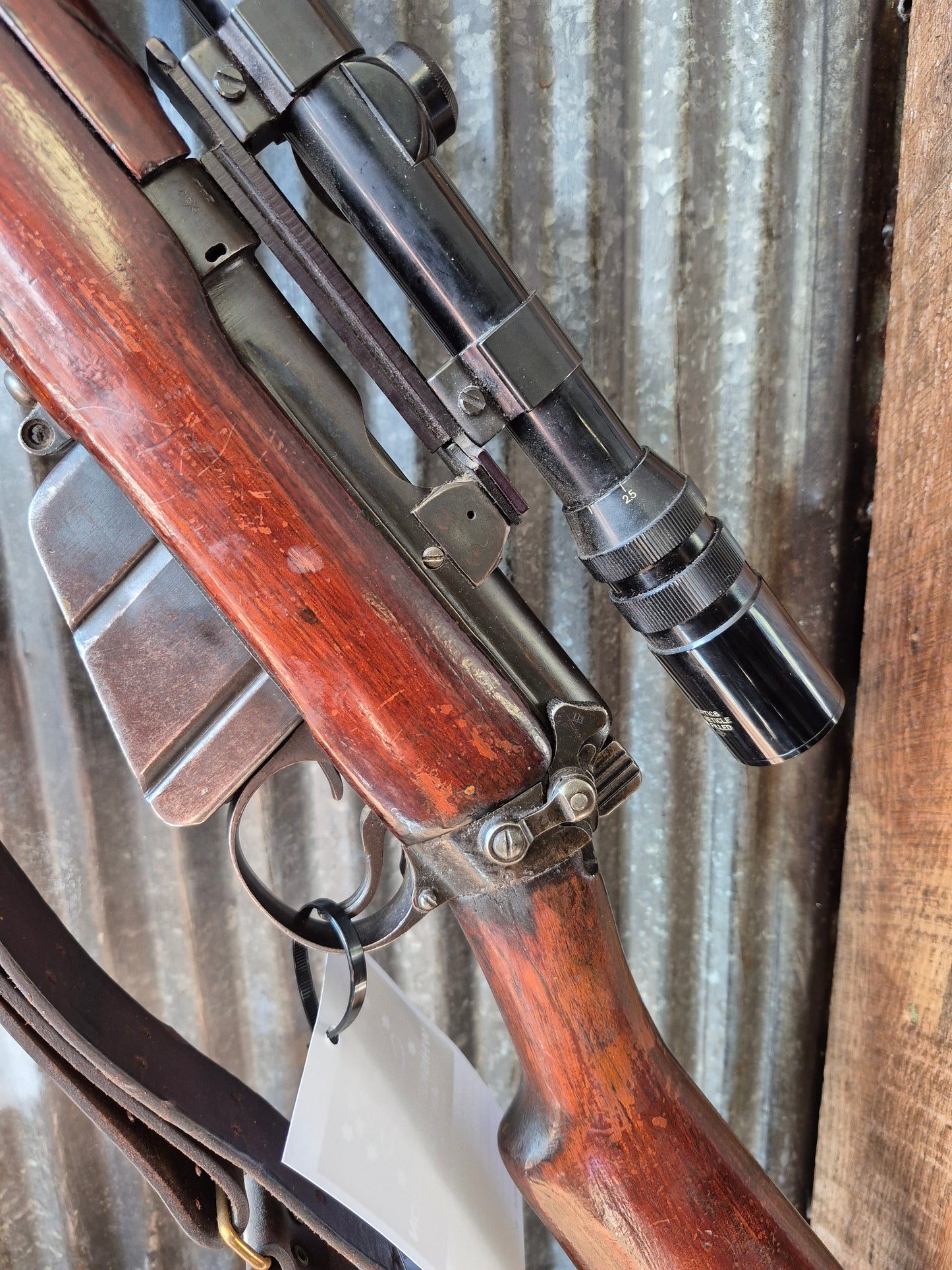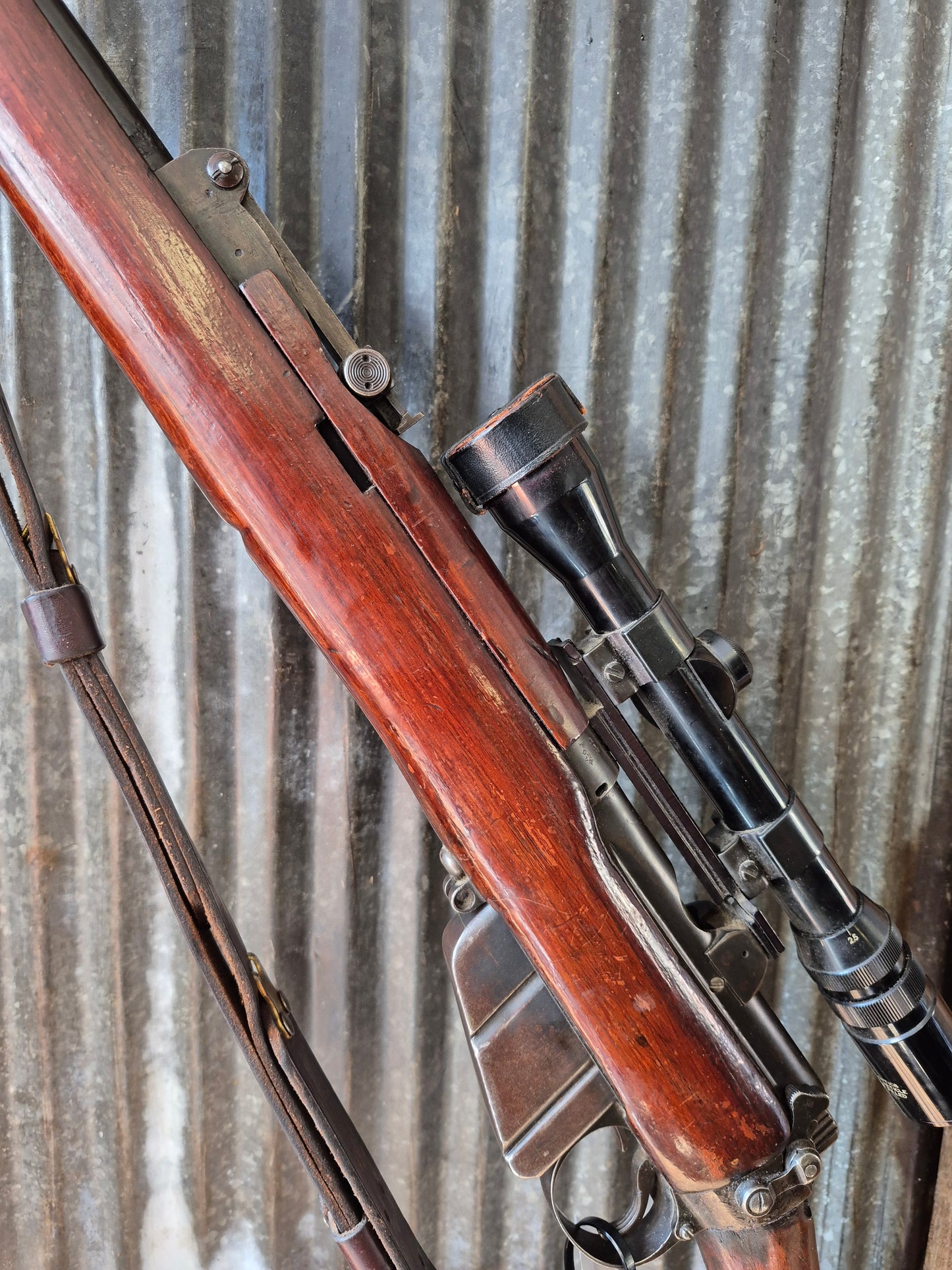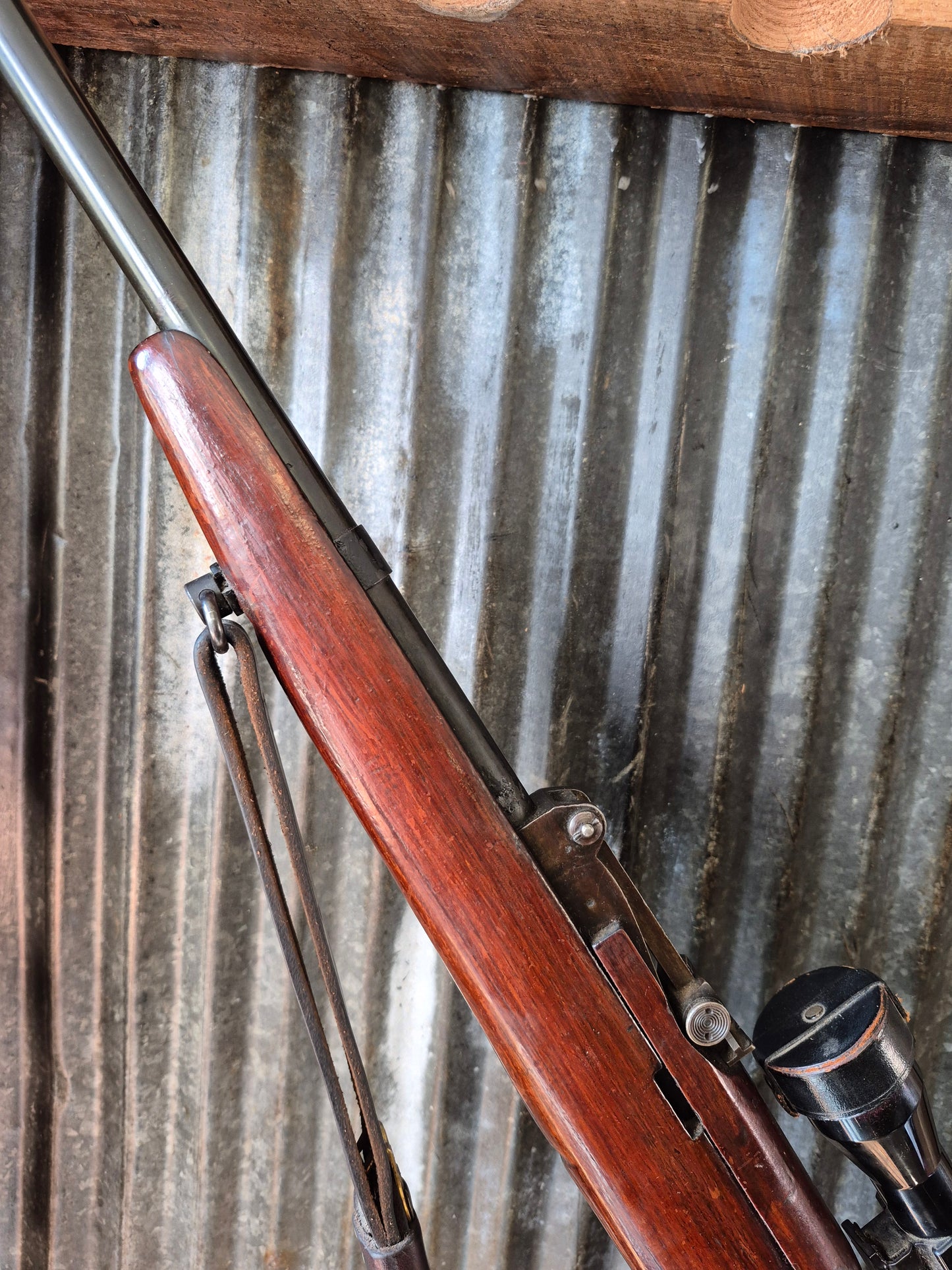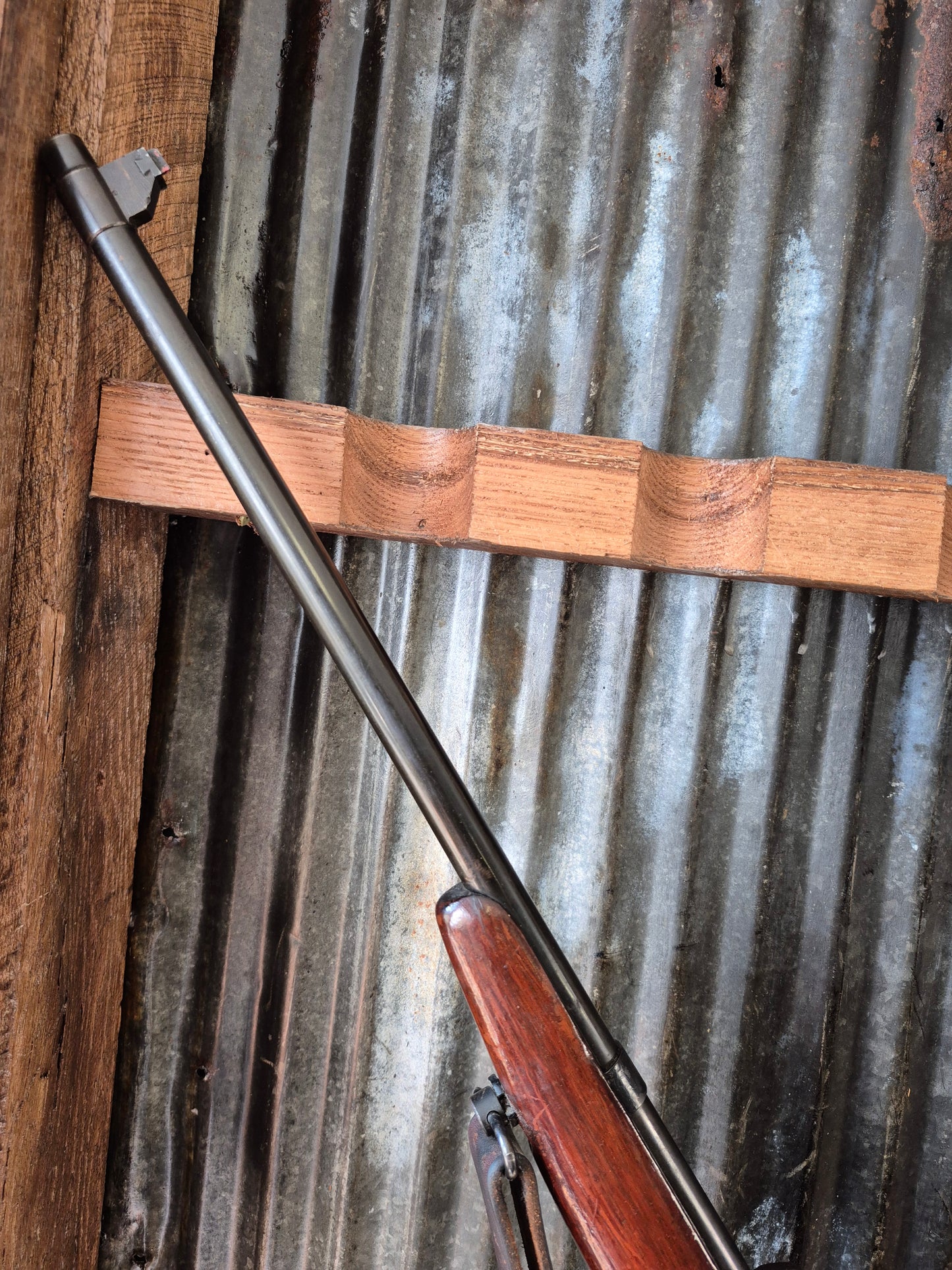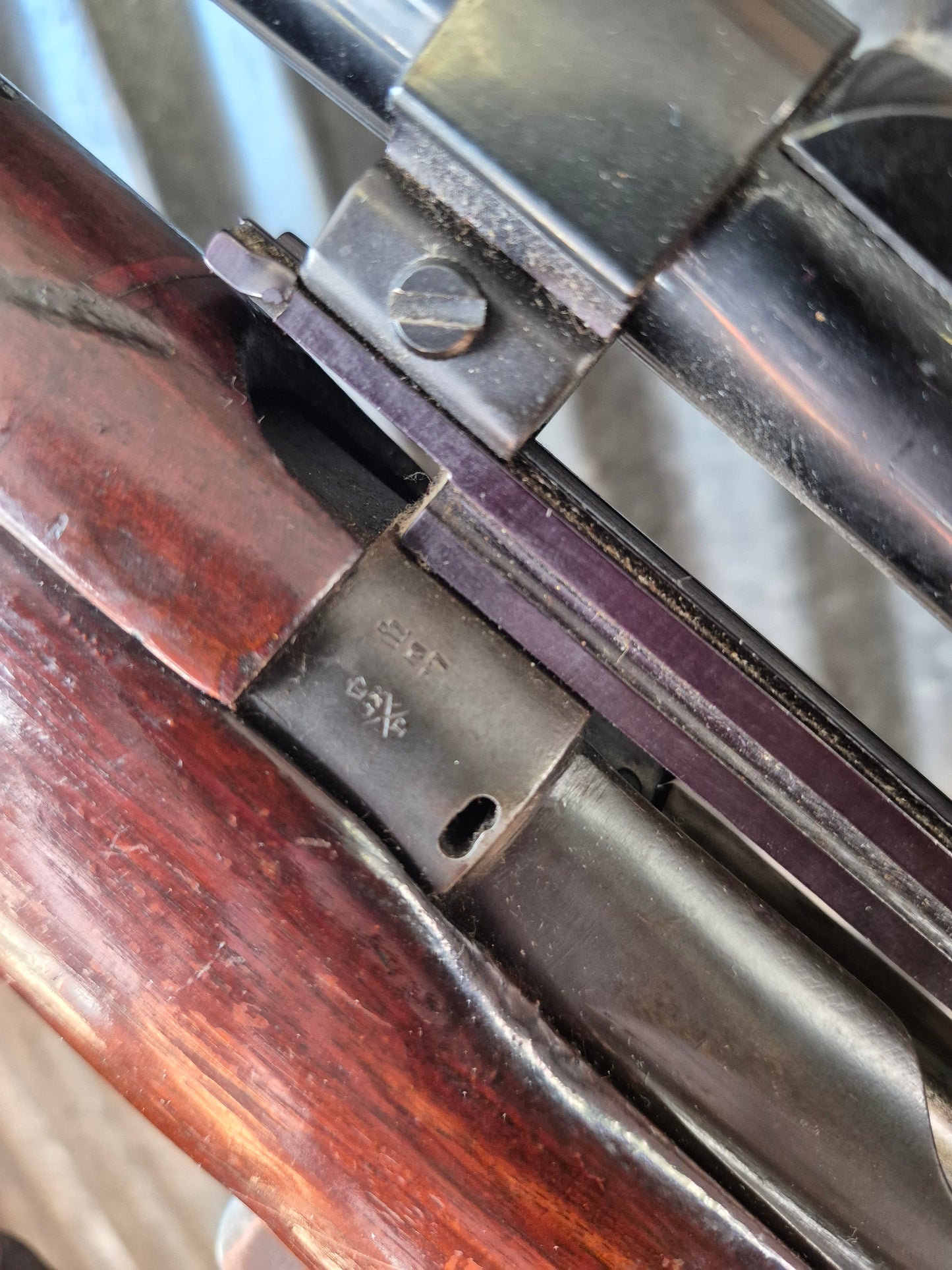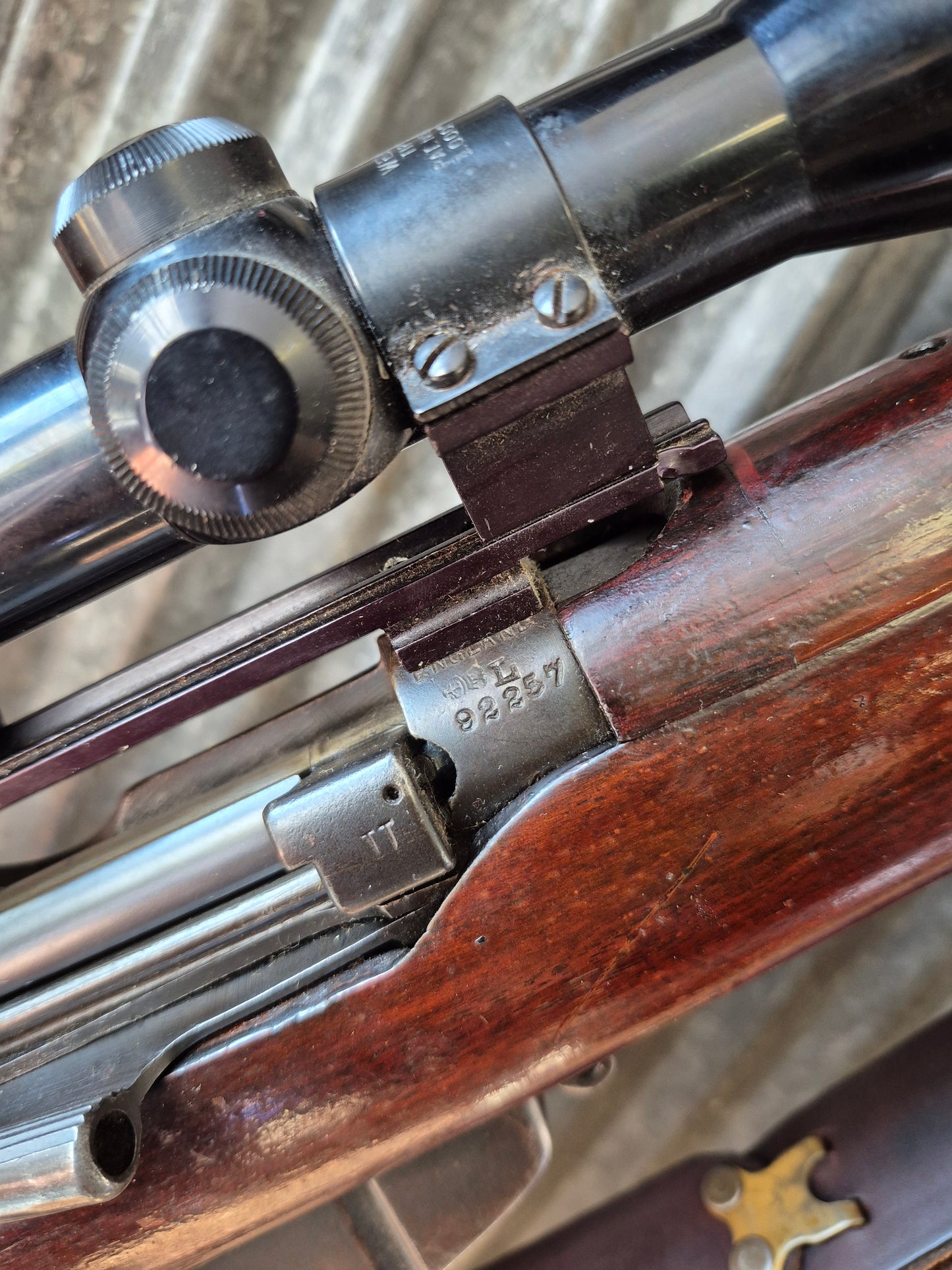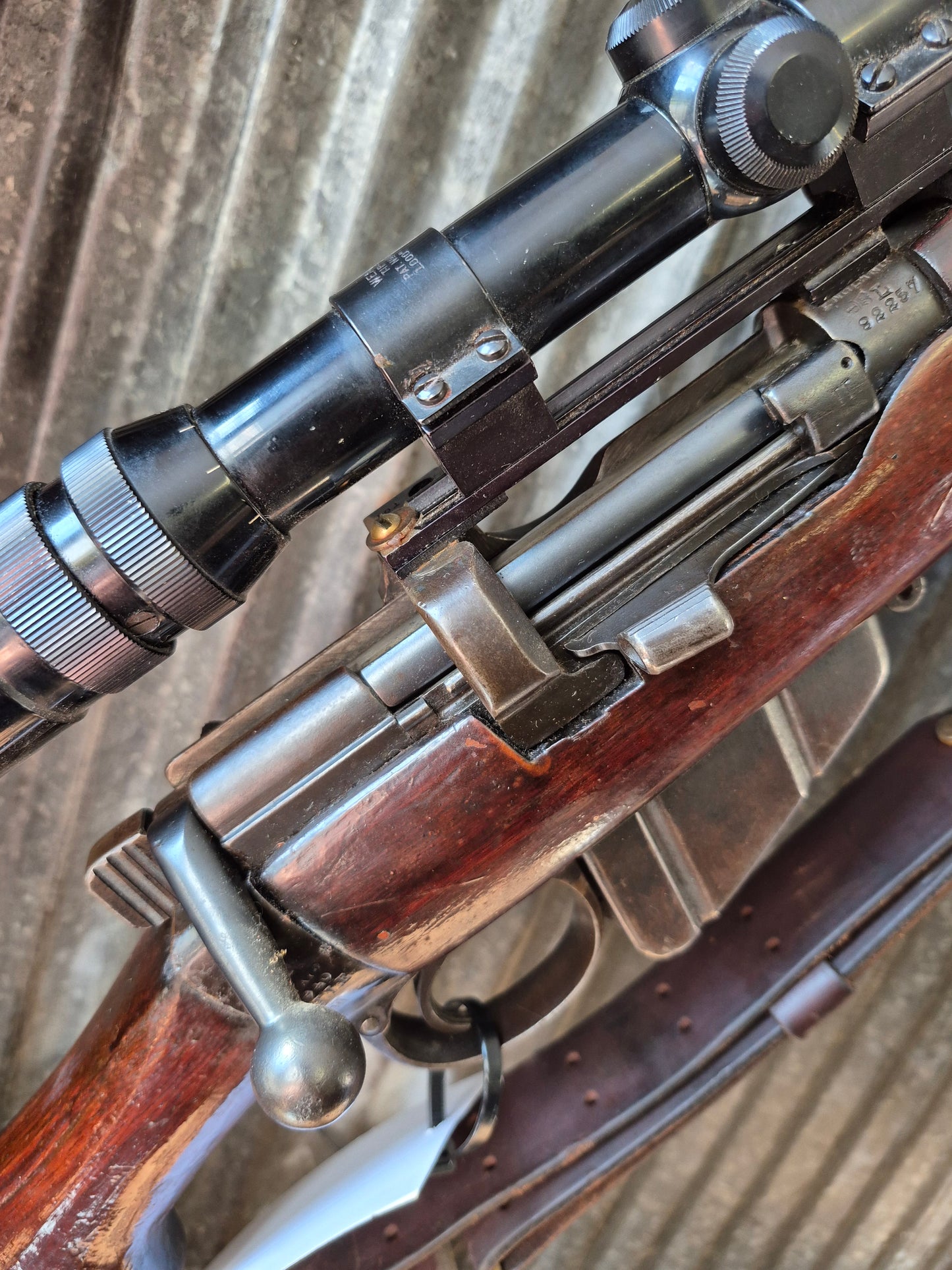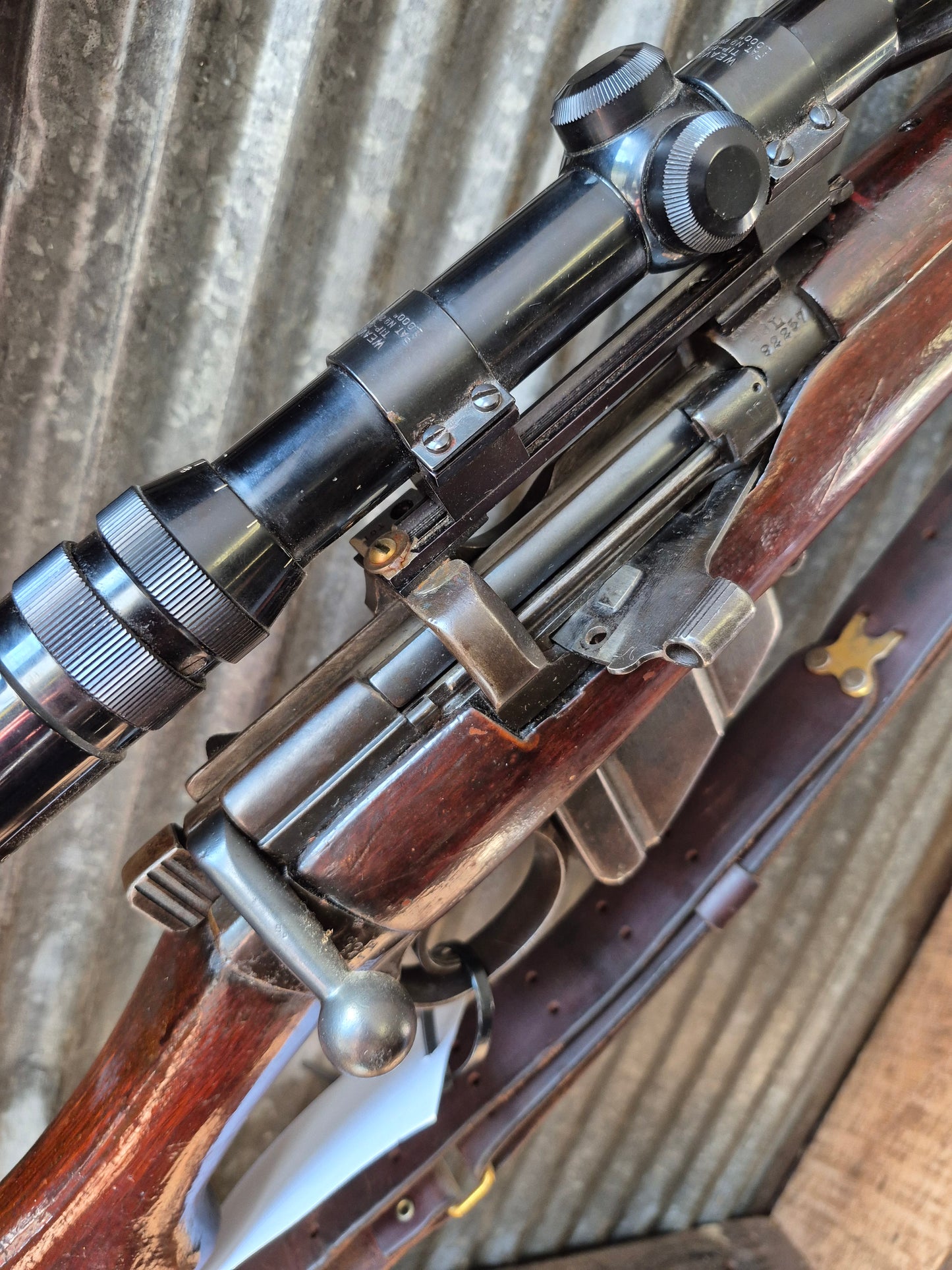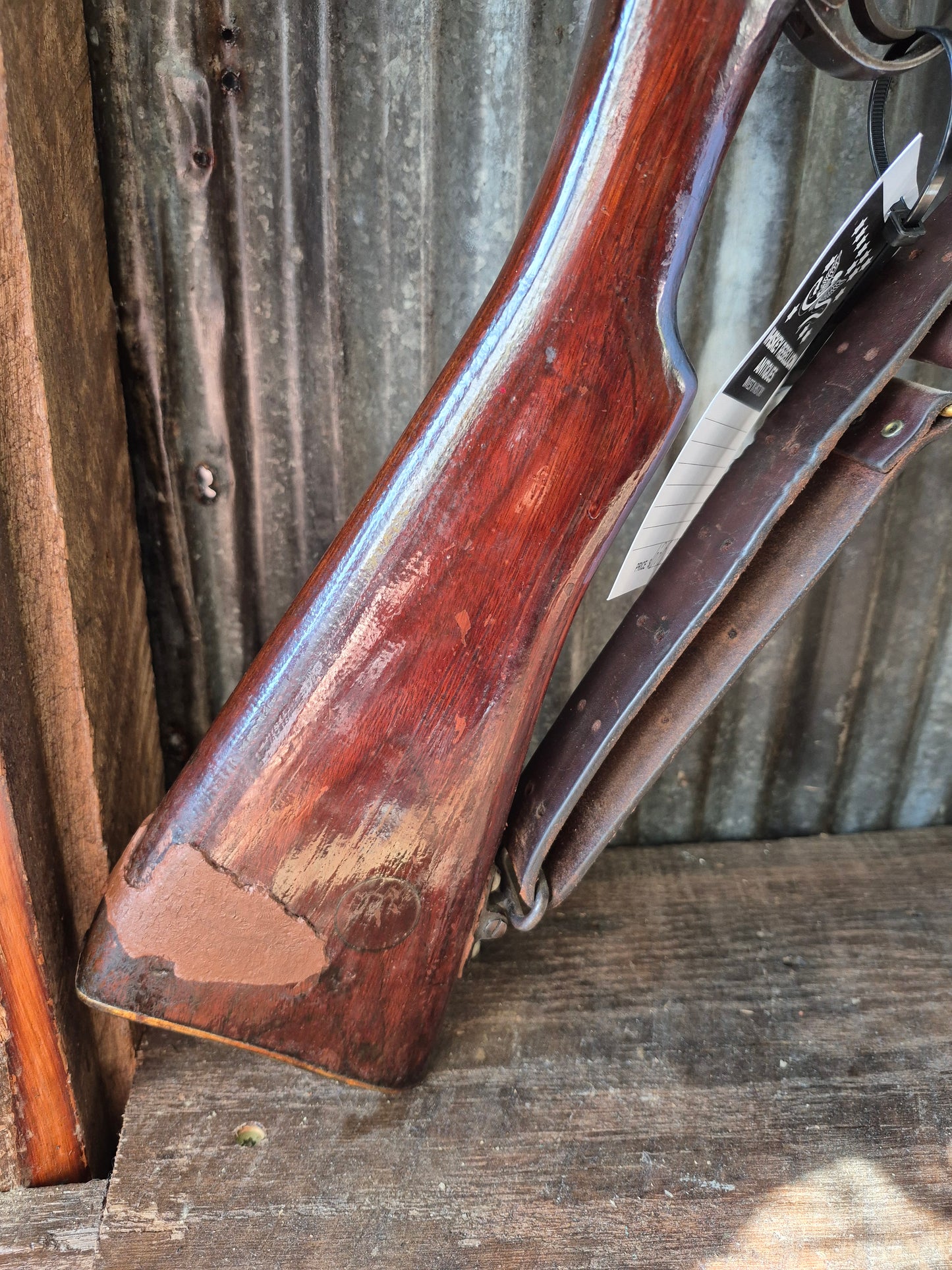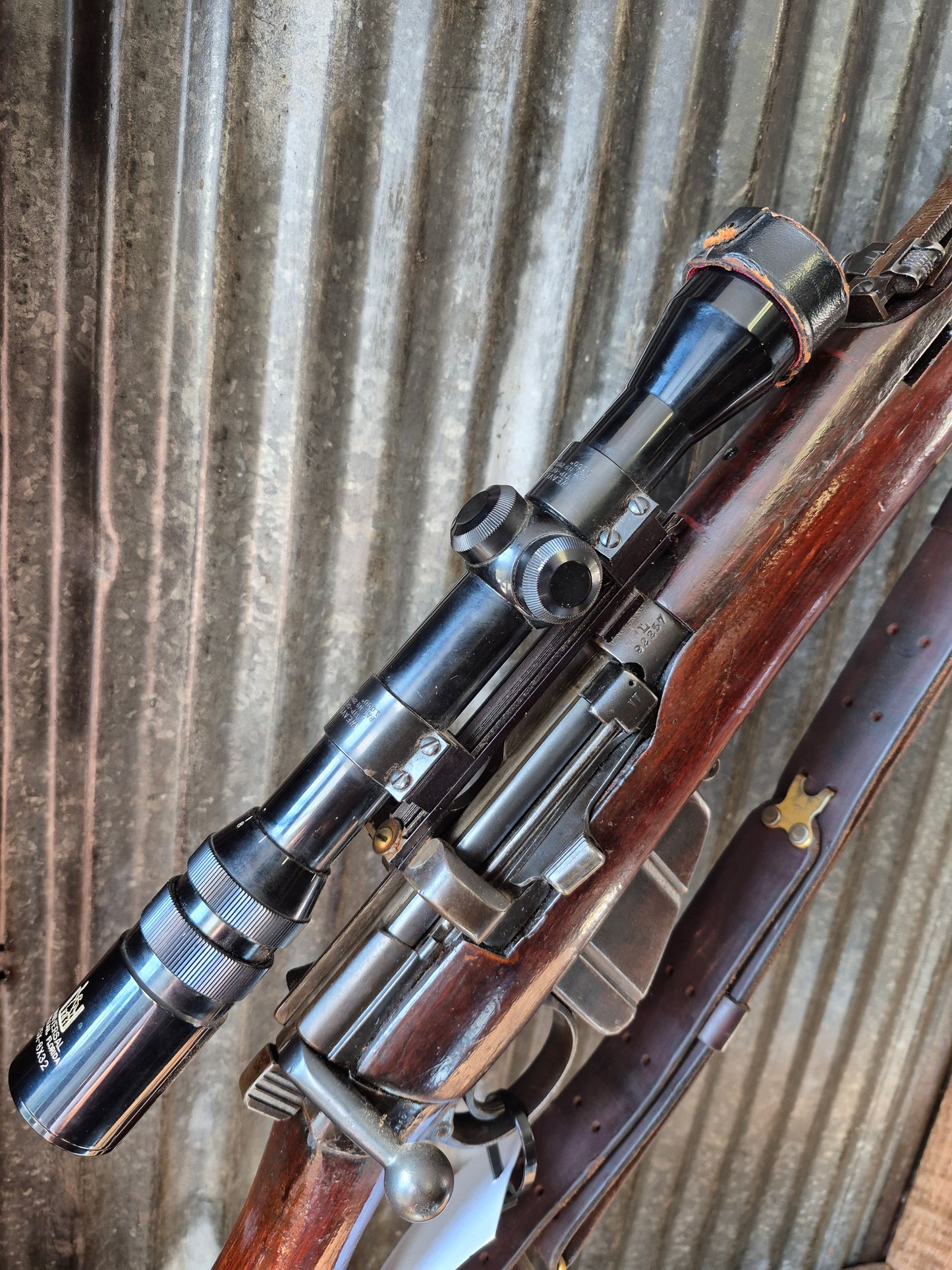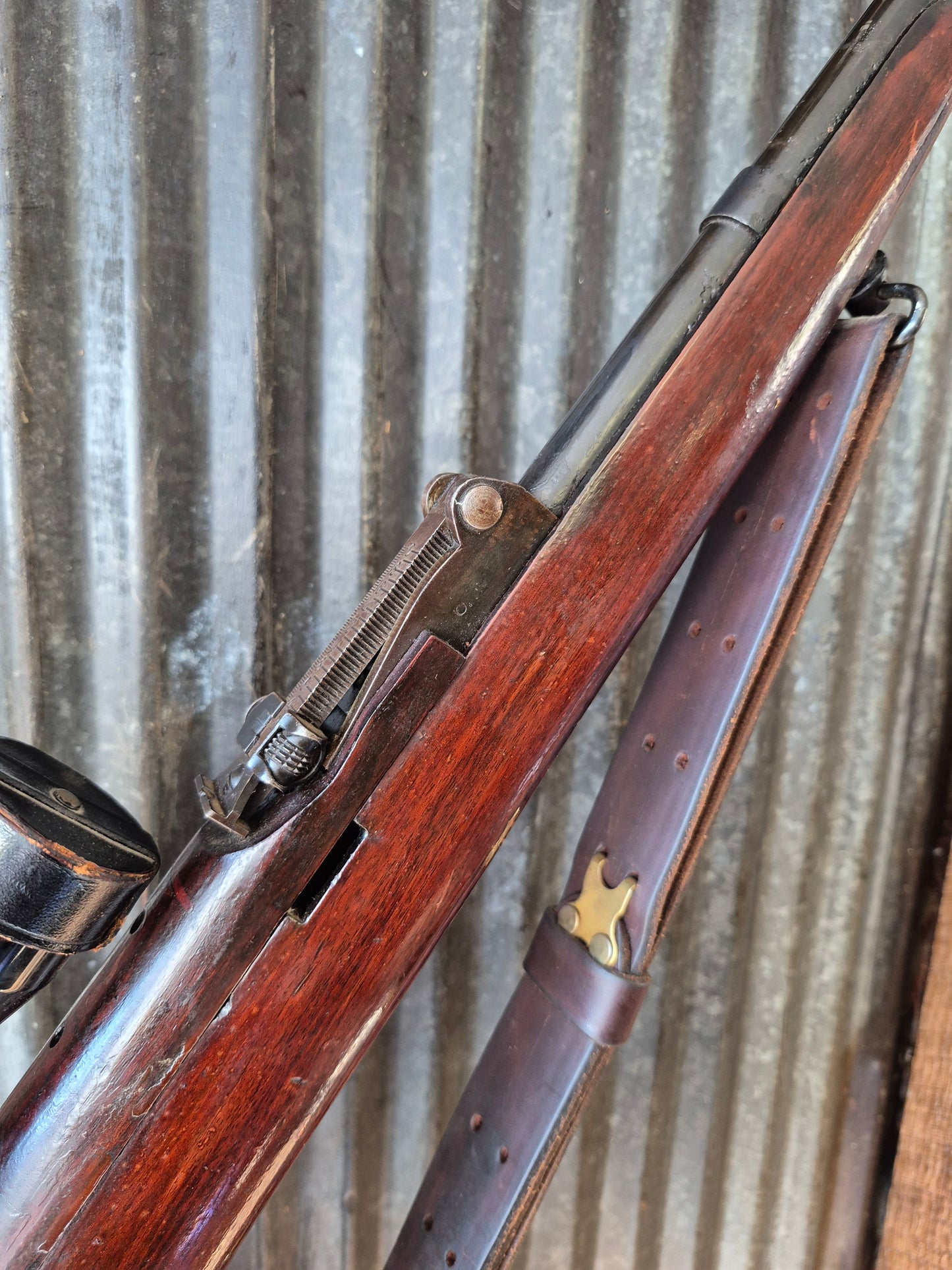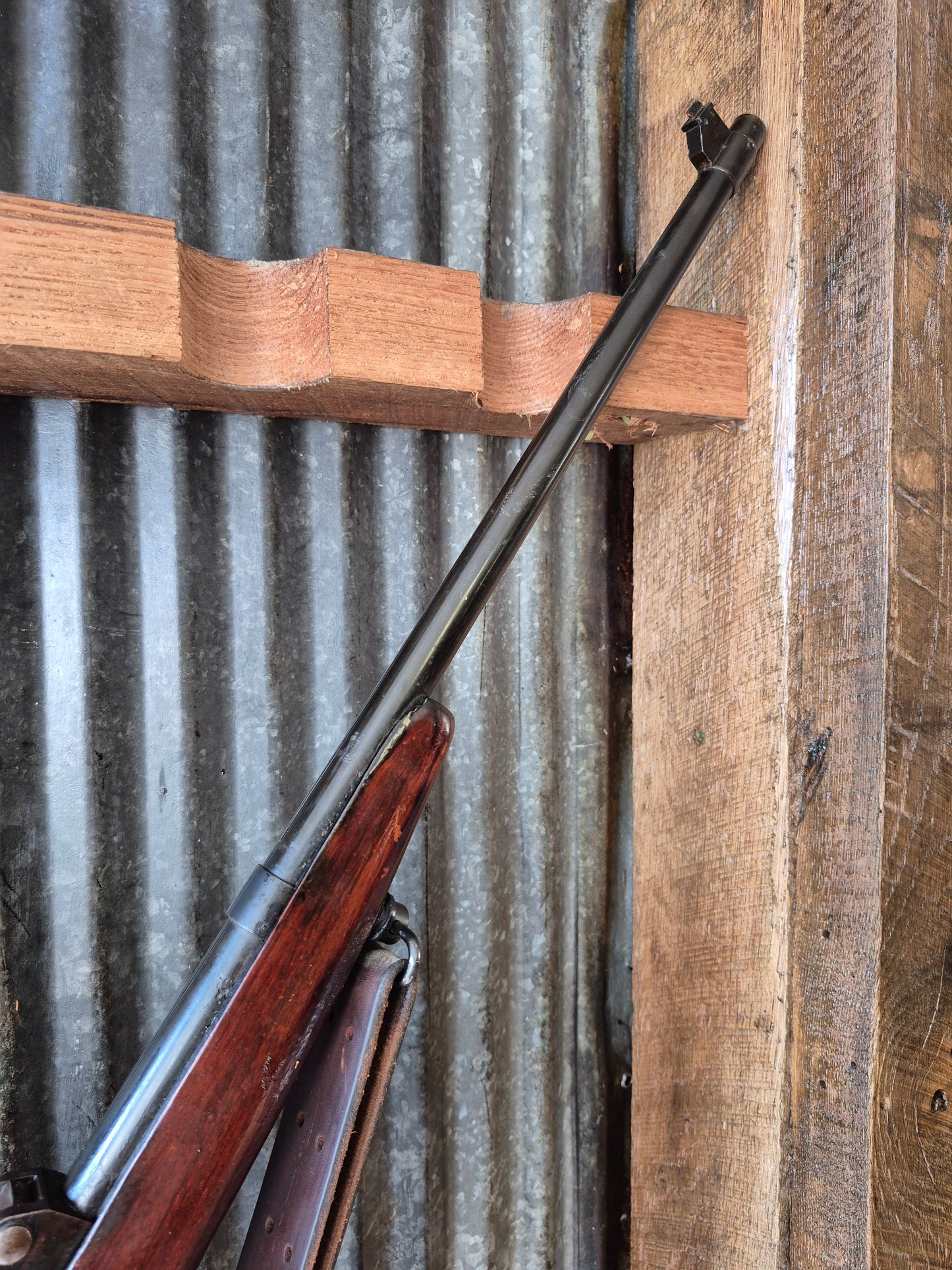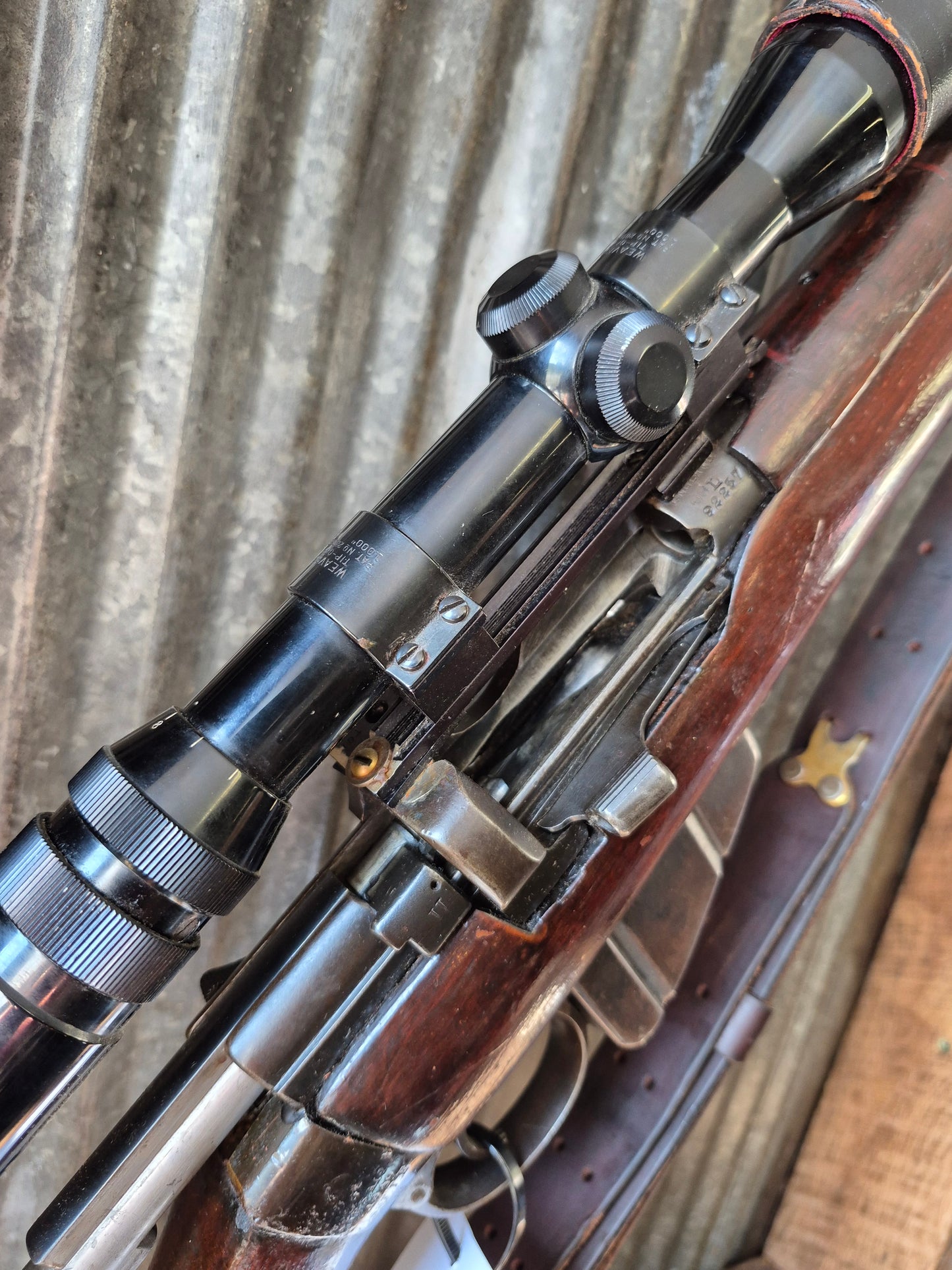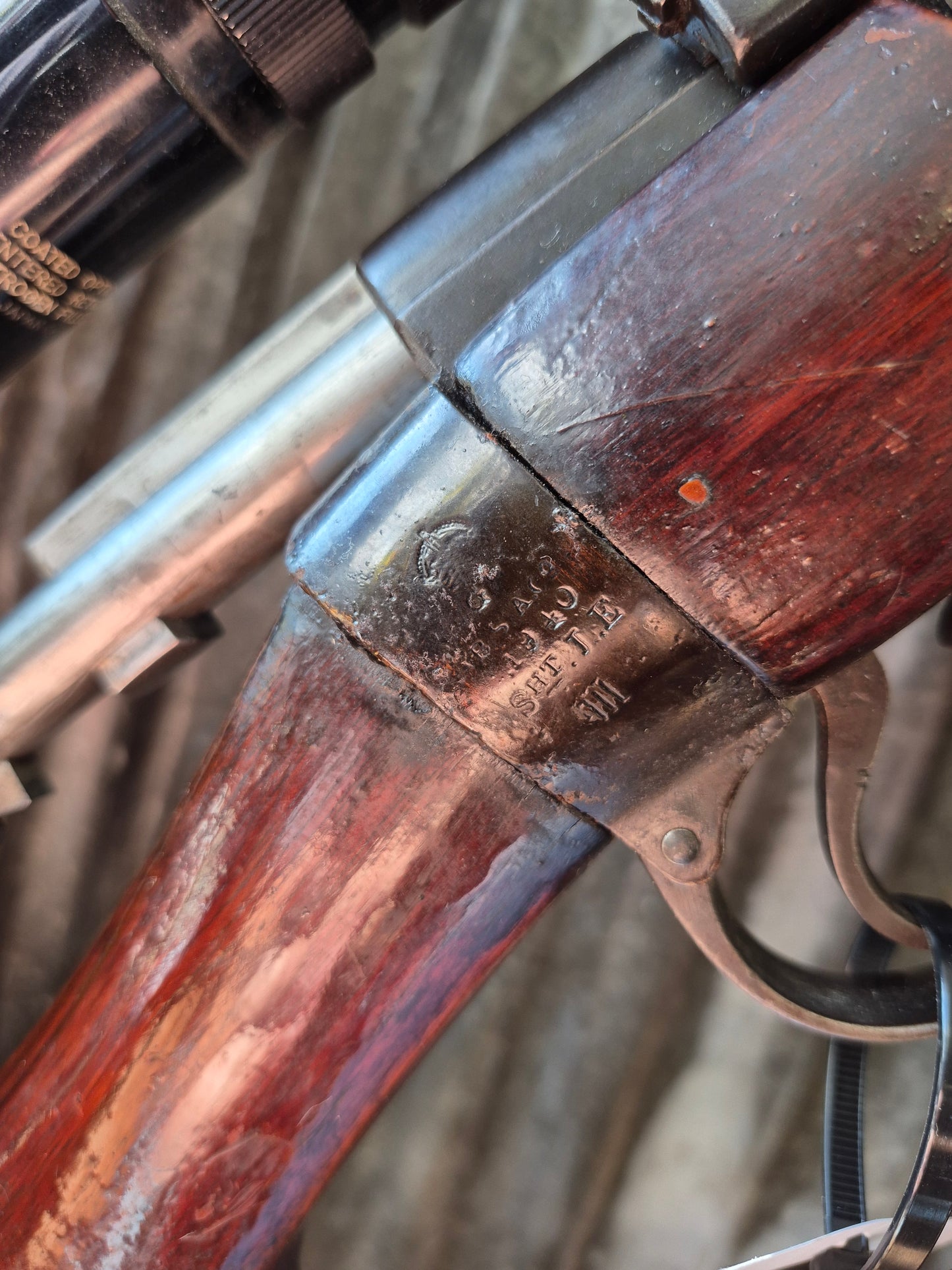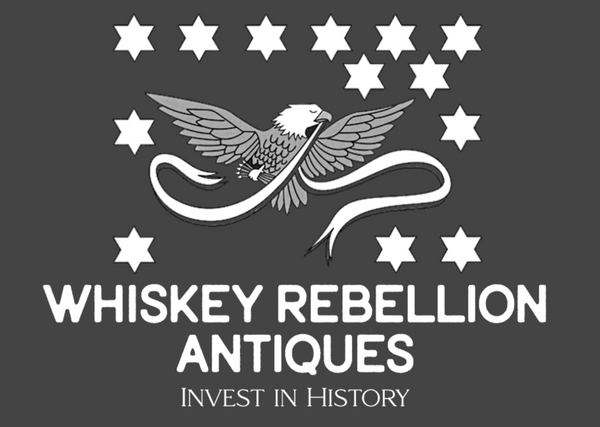Whiskey Rebellion Antiques
S M L E Mk3 1940
S M L E Mk3 1940
The SMLE Mk III (Short Magazine Lee-Enfield Mark III) is one of the most iconic bolt-action rifles in military history, serving as the standard-issue firearm for British and Commonwealth forces during World War I and into World War II. Adopted on January 26, 1907, it was an evolution of earlier Lee-Enfield designs, shortened for better handling in trenches and close-quarters combat while maintaining long-range accuracy. Its smooth bolt action allowed for rapid fire—skilled users could achieve 15–20 aimed rounds per minute—earning it a fearsome reputation among enemies, who sometimes mistook its volume of fire for machine guns.
Key Specifications
Feature
Details
Caliber
.303 British (rimmed, high-velocity spitzer cartridge, Mk VII standard)
Action
Bolt-action, rear-locking lugs
Barrel Length
25 inches (635 mm)
Overall Length
44 inches (1,118 mm)
Weight
Approximately 8.8 lbs (4 kg) unloaded
Magazine
Detachable box, 10-round capacity (double that of many contemporaries like the Mauser or Springfield)
Effective Range
Up to 600 yards (550 m); sights graduated to 2,000 yards
Muzzle Velocity
~2,440 ft/s (744 m/s) with Mk VII ammo
Feed System
Stripper clips for 10-round loading
The rifle's design emphasized reliability in muddy, dusty conditions, with a fixed charger guide and improved handguards for the Mk III variant. It was chambered specifically for the .303 British cartridge, a bottlenecked round developed in 1888 that balanced power and controllability.
Historical Context and Variants
Development: Evolved from the longer Magazine Lee-Enfield (MLE) to address handling issues in the Boer War. The "short" designation reduced length by about 5 inches compared to predecessors.
World War I Service: Over 2 million produced; simplifications in 1915 led to the Mk III* variant (removing the magazine cutoff and long-range volley sights for faster wartime production). Used extensively at battles like the Somme and Ypres.
World War II and Beyond: Continued in service alongside the No. 4 Mk I; produced in Australia (Lithgow) and India (Ishapore) with over 1 million units made during the war. Phased out in the 1950s for semi-automatic designs like the L1A1 SLR, but remained a training rifle into the 1960s.
Notable Adaptations: Some converted to .22 LR for training (No. 2 Mk IV); experimental jungle carbine versions (No. 6) were trialed but not adopted. Post-war, many were sporterized for civilian use.
Ships Free to the FFL of your choice!
Couldn't load pickup availability
